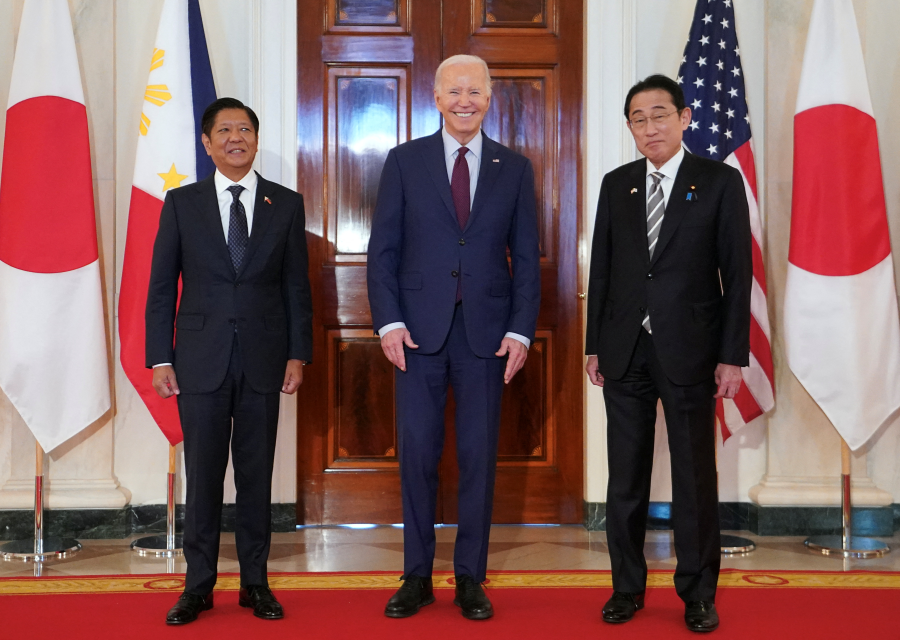
Even as China continues to exert economic influence across Southeast Asia and beyond with its Belt and Road Initiative, the United States and Japan struck a deal in April with the Philippines to jointly fund a massive infrastructure investment project spanning five regions, including the country's capital region of Metro Manila, on the nation's largest island.
The Luzon Economic Corridor is the first project of its kind in the Indo-Pacific region under the U.S.-initiated Partnership for Global Infrastructure and Investment (PGI), which is being spearheaded by G7 nations to fund infrastructure projects in developing nations. The initiative is also seen as harbouring Washington and Tokyo’s interest to rein in China’s economic ambitions in the Indo-Pacific region. And the Philippines – America’s oldest ally in the region – is happy to jump onboard.
“The corridor will support connectivity among Subic Bay, Clark, Manila, and Batangas as well as facilitate strategic, anchor investments within each hub in high-impact infrastructure projects, including rail, port modernisation, agribusiness, and clean energy and semiconductor supply chains and deployments,” the U.S. State Department said in a statement following the first meeting of the steering committee on May 22 in Manila. Notably, Batangas and Manila are big ports, and Subic and Clark are major economic zones, with the latter being former U.S. military bases until 1991.
Edsel Tupaz, a senior partner at law firm Gorriceta Africa Cauton & Saavedra, expects that competition between companies in sectors such as construction, energy, and telecommunications will intensify as they begin seeking opportunities to tie up with foreign entities to increase their financial and technical capabilities.
“The United States, one of the key drivers of the PGI, has expressed its intention to use the PGI to invest in ICT (information and communications technology) and transportation infrastructure, which it considers as high-impact projects that are necessary to sustain the growth of developing nations,” notes Tupaz.
The Philippine government estimates that the economic corridor is expected to generate as much as $100 billion in investments from Japan and the U.S. over the next decade, which is promising ample demand in legal advisory in industries including logistics and transportation, semiconductor, and clean energy.
To facilitate this surge of investments, local law firms may position themselves to be equipped with the necessary capabilities to handle engagements with foreign businesses related to projects funded by the economic corridor, says Tupaz.
Therefore, law firms and lawyers providing advisory are required to manage large corporate matters that have inherent cross-border aspects, adds Tupaz, due to the expected increase in tie-ups between foreign and local businesses.
Apart from legal expertise in public-private partnership, infrastructure, project finance, and general corporate services, Tupaz points out that lawyers with experience in corporate law will be needed to help foreign firms make strategic choices and minimise regulatory and tax exposure.
In addition, with Southeast Asian countries doubling down on their focus on energy transition and decarbonisation efforts, the environmental impact of construction projects will also be taken into consideration in legal guidance.
"There is also a growing demand for lawyers who specialise in the evolving Environment, Social, and Government (ESG), and corporate services practice areas. Construction firms worldwide have become more sensitive to public and investor clamour for sustainable and environmentally friendly corporate practices,” notes Tupaz.
As such, law firms should prepare themselves to be consulted on the various reportorial requirements, standards, and regulatory and fiscal incentives provided by various Philippine agencies for companies meeting ESG-related targets, Tupaz notes.
And with construction projects naturally come disputes. As such, lawyers must also be capable to utilise ADR mechanisms and litigation to settle the disputes of their clients, adds Tupaz.
“The recent passage of Republic Act No. 11966, or the new Public-Private Partnership Code, and growing popularity of alternative dispute resolution mechanisms as an alternative to litigation in court have generated greater demand for legal practitioners who specialise in construction arbitration,” he says.
However, it’s worth noting that domestic law firms and lawyers are set to reap the most benefits from the growing pie in cross-border advisory work as the 1987 Philippine Constitution prohibits foreign lawyers from practising in the Philippines.
“Japanese and U.S. investors will need assistance in dealing with Philippine nationality requirements. Select sectors of the Philippine economy and labour market are exclusively reserved for Philippine nationals or have limitations imposed on the participation of foreign nationals,” notes Tupaz.
As a result, Tupaz believes the economic corridor project presents a great opportunity for local law firms to partner with foreign firms in order to extend their reach to multinational corporations.
“Local law firms should be proactive in directly reaching out to prospective foreign clients and law firms and position themselves to be able to offer tailored services and expertise for special projects,” he notes.


